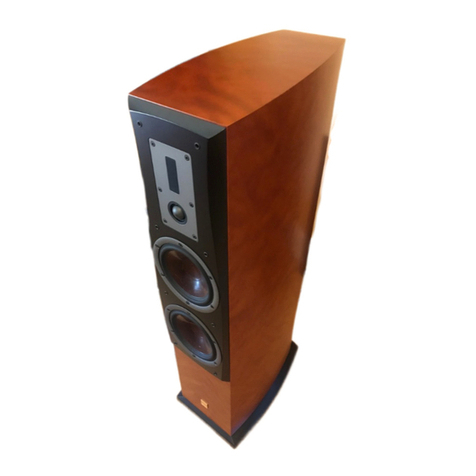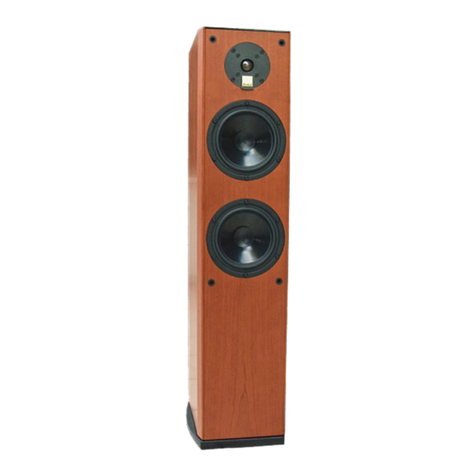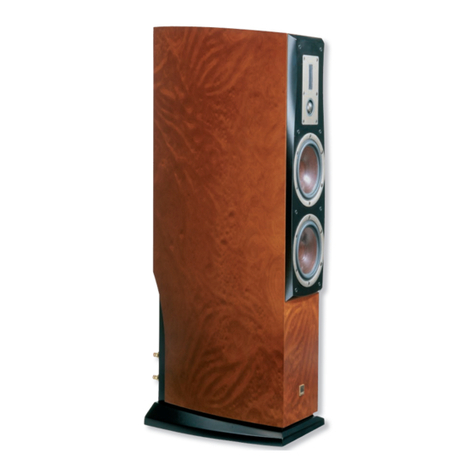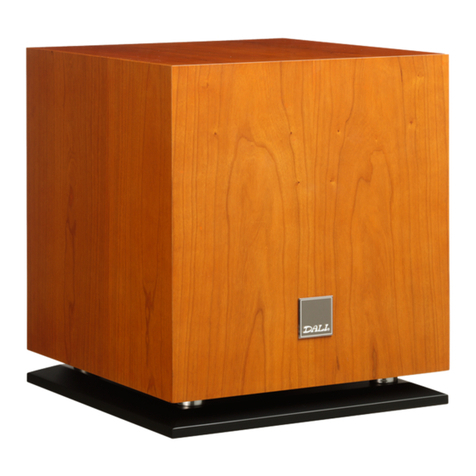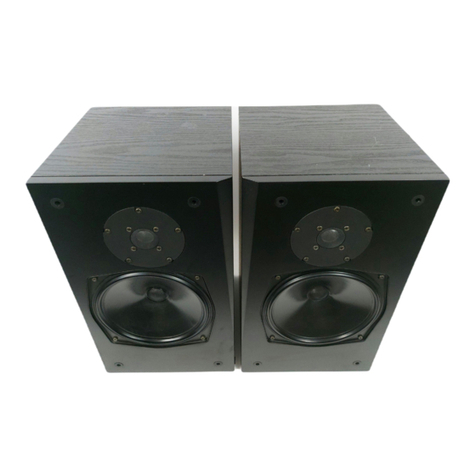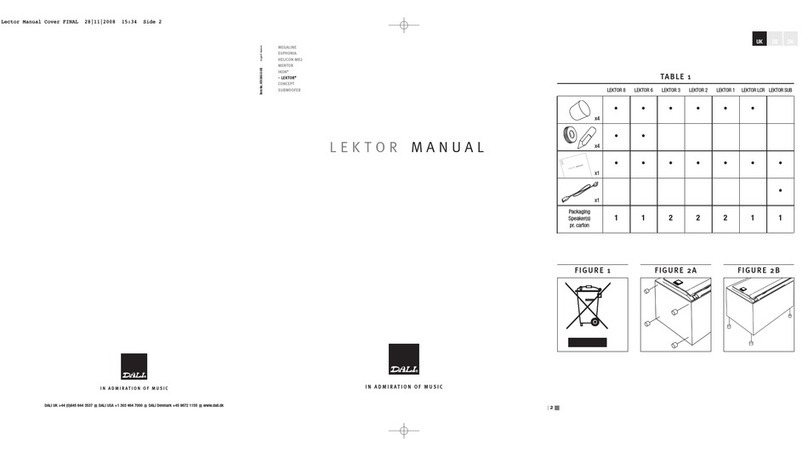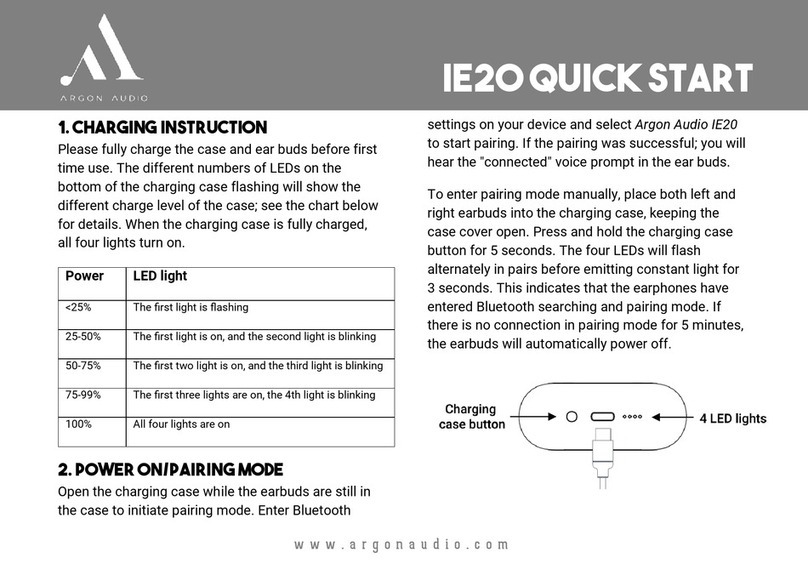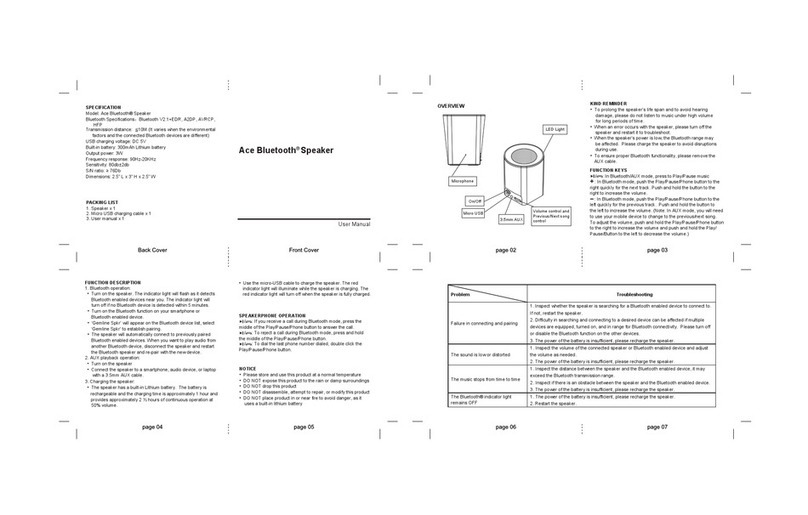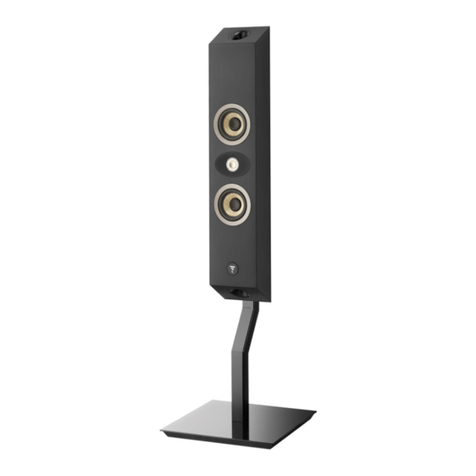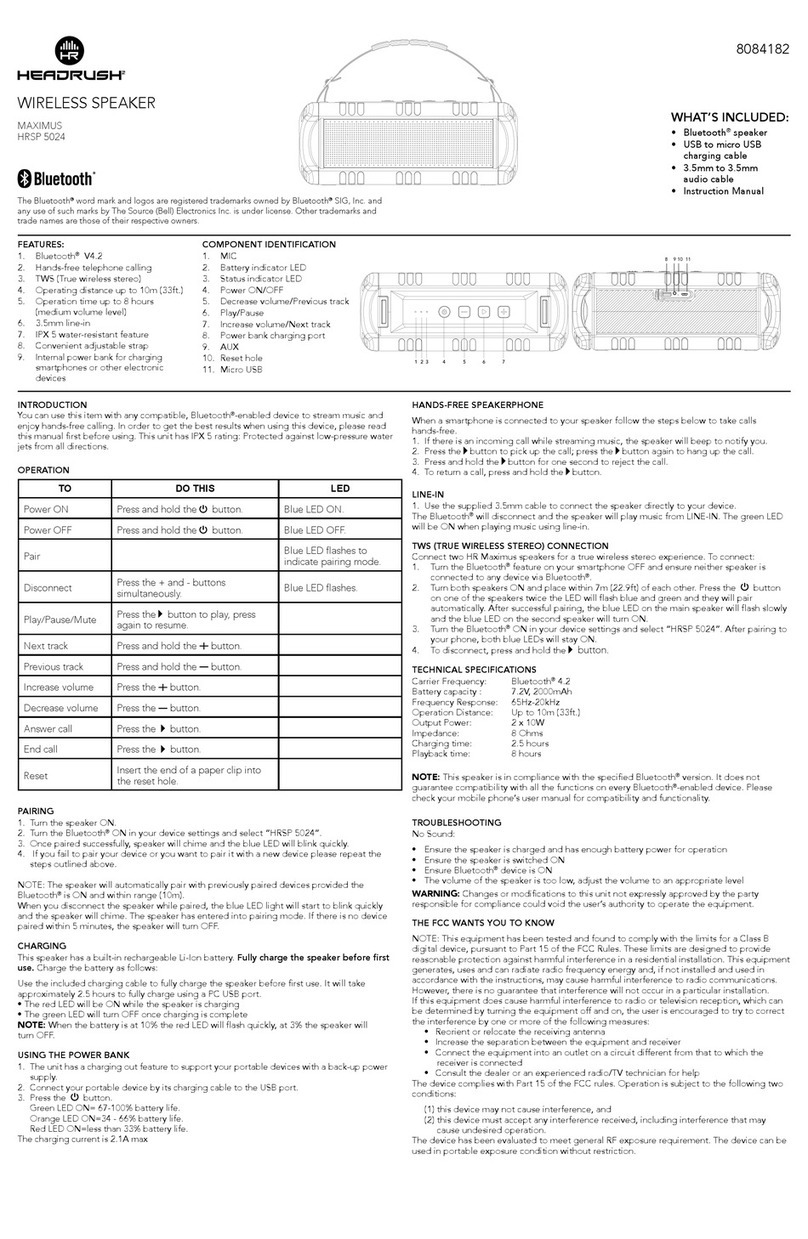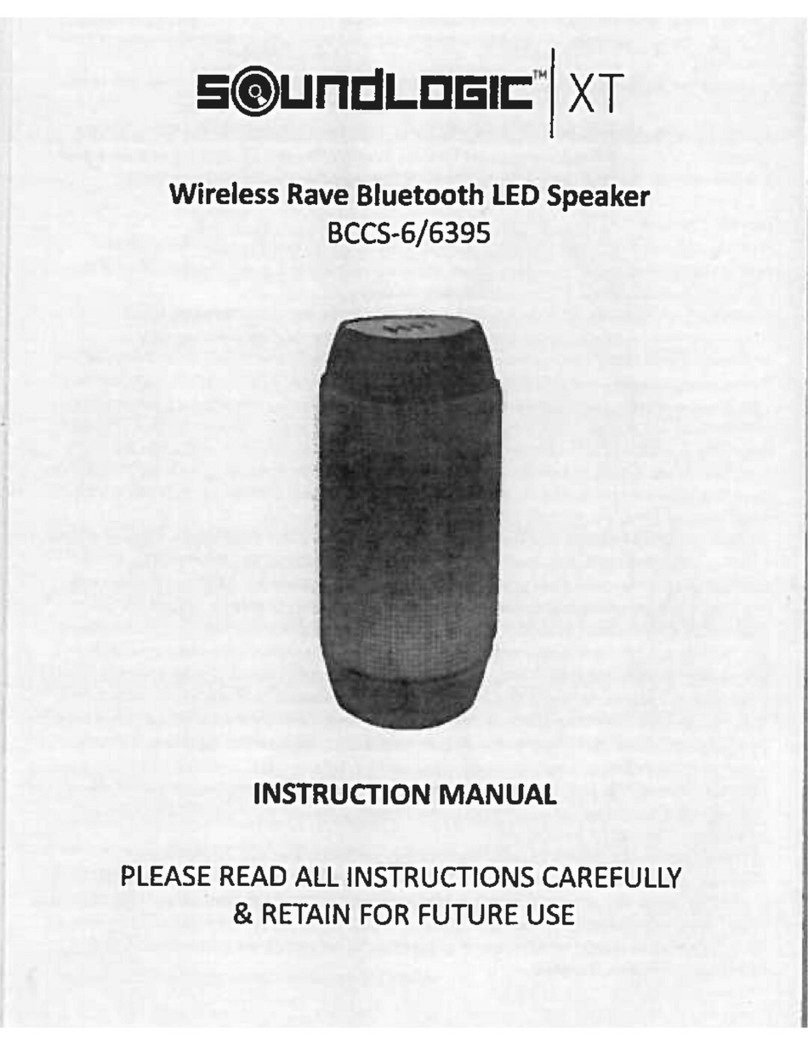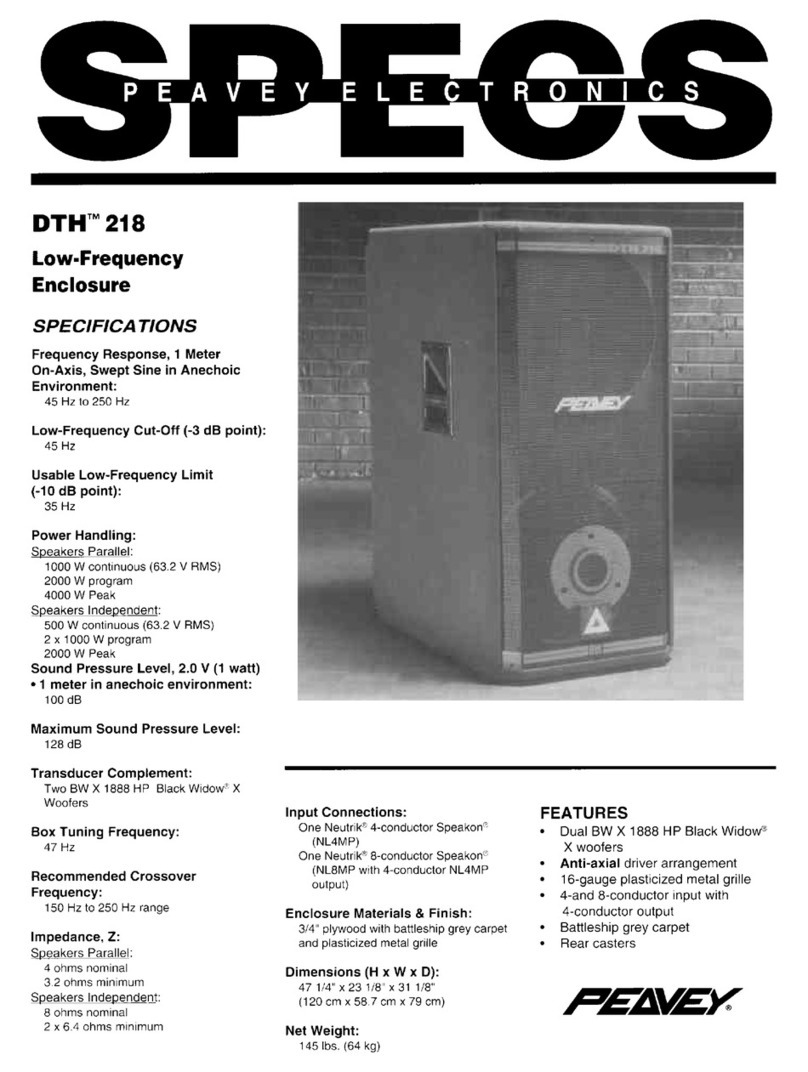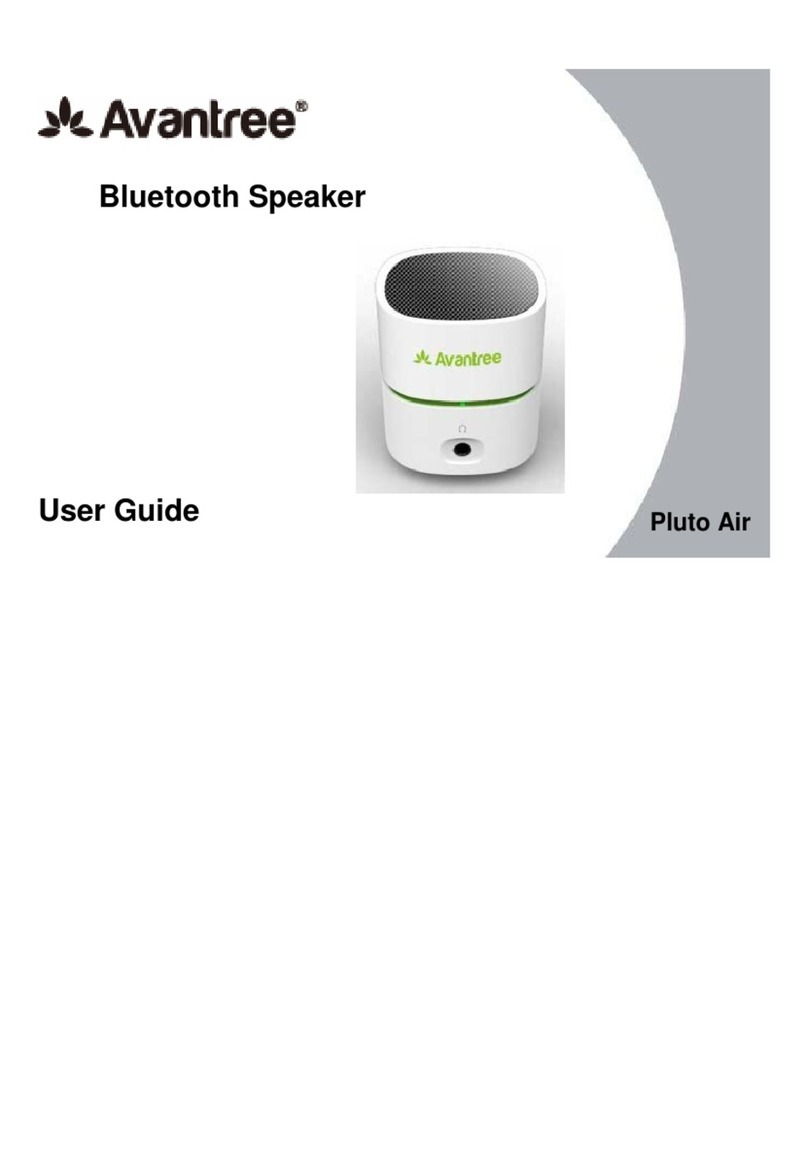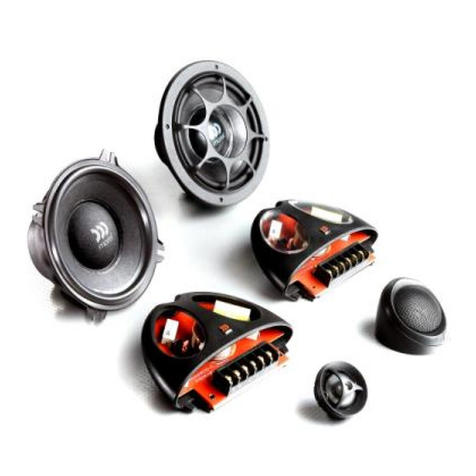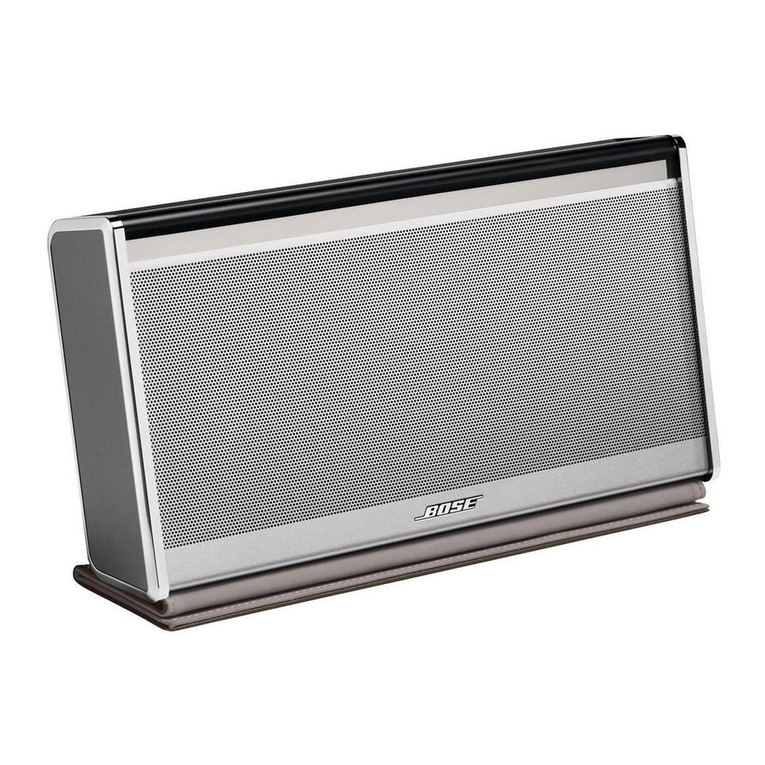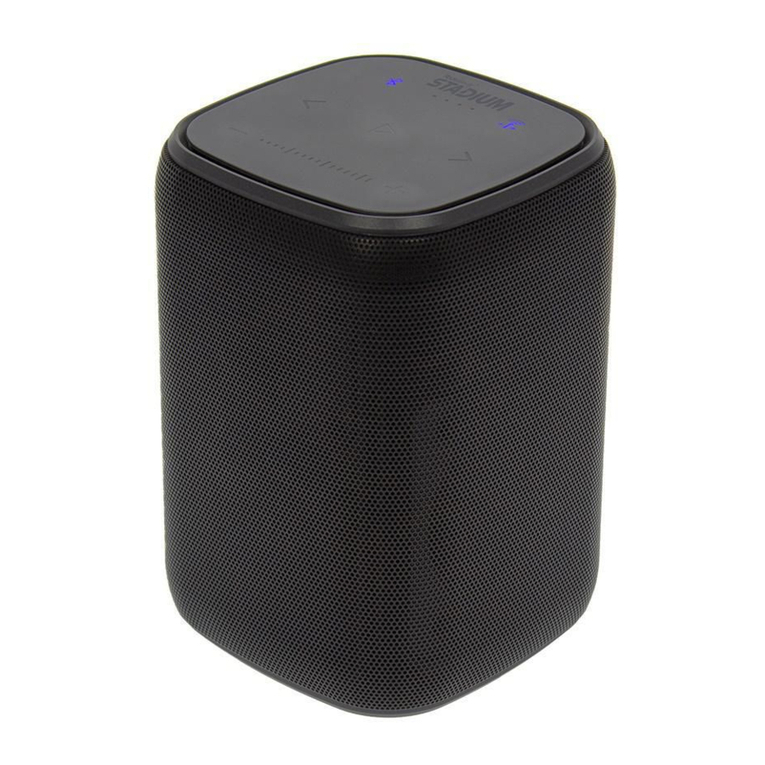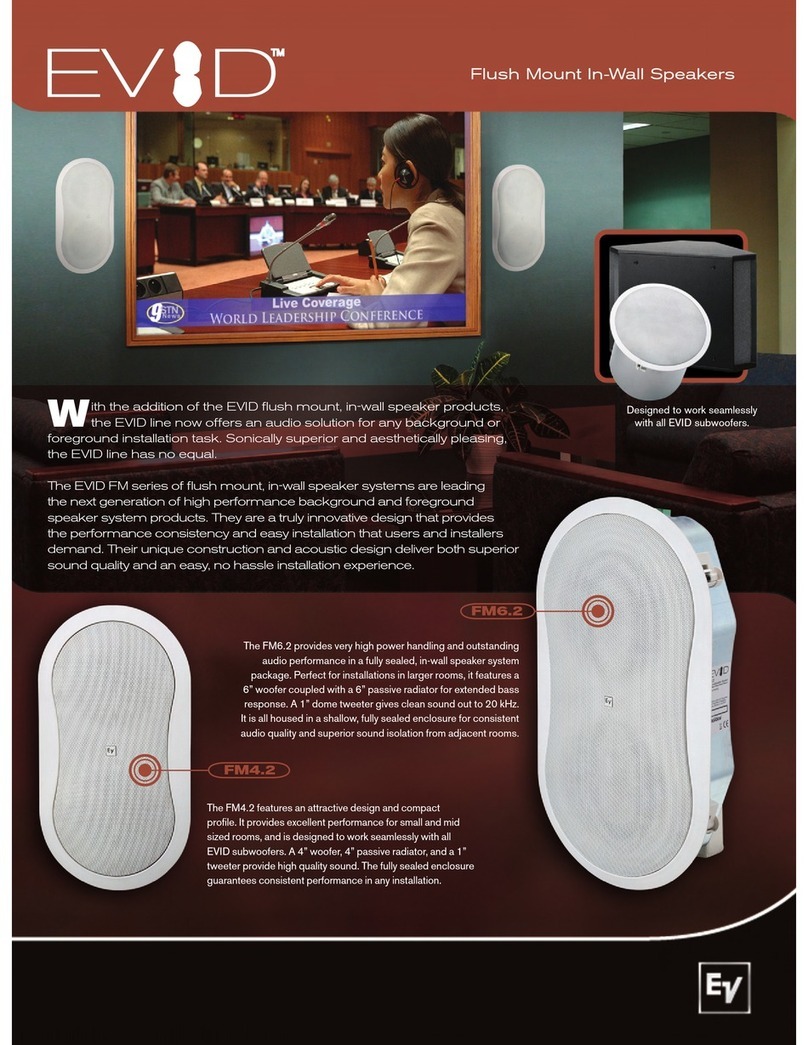
10
Read instructions - all the safety and operating instructions
should be read before the appliance is operated.
Retain instructions - the safety and operating instructions
should be retained for future reference.
Heed warnings - all warnings on the appliance and in the
operating instructions should be adhered to.
Follow instructions - all operating and use instructions should
be followed.
Water and moisture - the appliance should not be used near
water - for example, near a bathtub, washbowl, kitchen sink,
laundry tub, in a wet basement, or near a swimming pool and
the like. To reduce the risk of re or electric shock, do not expose
this apparatus to rain or moisture. The apparatus should not be
exposed to dripping or splashing. Objects lled with liquids, such
as vases should not be placed on the apparatus. Wall or ceiling
Cleaning - do not use any liquid cleaners. Use only a dry cloth to
wipe off dust and grease.
Non-use periods - the power cord of the appliance should be
unplugged from the outlet when left unused for a long period of
time and during lightning storms.
Object and liquid entry - care should be taken so that objects
do not fall and liquids are not spilled into the enclosure through
openings.
Servicing - the user should not attempt to service the appliance
beyond that described in the operating instructions. All other
servicing should be referred to qualied service personnel. To
reduce the risk of electric shock, do not remove cover (or back) as
there are no user-serviceable parts inside.
Damage requiring service - the appliance should be serviced by
qualied personnel when:
The power-supply cord or the plug has been damaged; or
Objects have fallen, or liquid has been spilled into the appliance; or
The appliance has been exposed to rain; or
The appliance does not appear to operate normally, or exhibits a
marked change in performance; or
The appliance has been dropped, or the enclosure damaged.
Battery heat - do not expose the battery or battery pack to
excessive heat such as sunshine, re or the like.
Battery replacement - danger of explosion if battery is incorrectly
replaced. Replace only with the same or equivalent type.
Battery storing - keep new and used batteries away from children.
If the battery compartment does not close securely, stop using the
product and keep it away from children.
1.
2.
3.
4.
5.
6.
6
UK DE DK
5
JP
RISK OF ELECTRIC SHOCK DO NOT OPEN.
TO REDUCE THE RISK OF ELECTRIC SHOCK,
DO NOT REMOVE THE BACK PANEL.
NO USER-SERVICEABLE PARTS INSIDE.
REFER SERVICING TO QUALIFIED PERSONNEL.
The lightning flash within an equilateral triangle is
intended to alert you to the presence of non insulated
“dangerous voltage” within the product’s enclosure that
may be of sufficient magnitude to constitute an electric
shock to persons.
The exclamation point within an equilateral triangle
is intended to alert you to the presence of important
operating and maintenance (servicing) instructions in
the literature accompanying the appliance.
1 Read instructions - all the safety and operating instructions
should be read before the appliance is operated.
2 Retain instructions - the safety and operating instructions
should be retained for future reference.
3 Heed warnings - all warnings on the appliance and in the
operating instructions should be adhered to.
4 Follow instructions - all operating and use instructions should
be followed.
5 Water and moisture - the appliance should not be used near
water - for example, near a bathtub, washbowl, kitchen sink,
laundry tub, in a wet basement, or near a swimming pool and
the like.
6 Carts and stands - the appliance should
be used only with a cart or stand if
recommended by the manufacturer.
7 Wall or ceiling mounting - the appliance should be mounted to
a wall or ceiling only as recommended by the manufacturer.
8 Ventilation - the appliance should be situated so that its
location or position does not interfere with proper ventilation.
For example, the appliance should not be situated on a bed,
sofa, rug, or similar surface that may block the ventilation
openings; or placed in a built-in installation, such as a
bookcase or cabinet, that may impede the flow of air through
the ventilation openings.
9 Heat - the appliance should be situated away from heat
sources such as radiators, heat registers, stoves, or other
appliances that produce heat.
10 Power sources - the appliance should be connected to a
power supply only of the type described in the operating
instructions or as marked on the appliance.
11 Power cord protection - power-supply cords should be routed
so that they are not likely to be walked on or pinched by items
placed on or against them, paying particular attention to cords
at plugs, convenience receptacles and the point where they
exit from appliance.
12 Cleaning - do not use any liquid cleaners. Use only a dry
cloth to wipe off dust and grease.
13 Non-use periods - the power cord of the appliance should
be unplugged from the outlet when left unused for a long
period of time.
14 Object and liquid entry - care should be taken so that
objects do not fall and liquids are not spilled into the
enclosure through openings.
15 Damage requiring service - the appliance should be
serviced by qualified personnel when:
a) The power-supply cord or the plug has been
damaged; or
b) Objects have fallen, or liquid has been spilled into
the appliance; or
c) The appliance has been exposed to rain; or
d) The appliance does not appear to operate normally,
or exhibits a marked change in performance; or
e) The appliance has been dropped, or the enclosure
damaged.
16 Servicing - the user should not attempt to service
the appliance beyond that described in the opera ting
instructions. All other servicing should be referred to
qualified service personnel.
17 Do not expose the battery or battery pack to excessive heat
such as sunshine, fire or the like.
18 Danger of explosion if battery is incorrectly replaced.
Replace only with the same or equivalent type.
19 Keep new and used batteries away from children. If the
battery compartment does not close securely, stop using
the product and keep it away from children.
20 This equipment is a Class II or double insulated
electrical appliance and does not require a safety
connection to electrical ground.
21 Appliance coupler is used as disconnect device and it
should remain readily operable during intended use. In order
to disconnect the apparatus from the mains completely, the
mains plug should be disconnected from the mains socket
outlet completely.
CAUTION
Carts and stands - the appliance should be used only with a
cart or stand if recommended by the manufacturer. When a cart
is used, use caution when moving the cart/apparatus combination
to avoid injury from tip-over.
IMPORTANT SAFETY INSTRUCTIONS
Wall or ceiling mounting – if the appliance includes options for wall
or ceiling mounting, it should be mounted only as recommended
by the manufacturer.
Ventilation - the appliance should be situated so that its location
or position does not interfere with proper ventilation. For example,
the appliance should not be situated on a bed, sofa, rug, or similar
surface that may block the ventilation openings; or placed in a
built-in installation, such as a bookcase or cabinet, that may
impede the ow of air through the ventilation openings.
Heat - the appliance should be situated away from heat sources
such as radiators, heat registers, stoves, or other appliances
(including ampliers) that produce heat.
Power sources - the appliance should be connected to a power
supply only of the type described in the operating instructions or
as marked on the appliance.
Power cord protection - power-supply cords should be routed
so that they are not likely to be walked on or pinched by items
placed on or against them, paying particular attention to cords
at plugs, convenience receptacles and the point where they exit
from appliance.
7.
8.
9.
10.
11.
12.
13.
14.
15.
16.
a)
b)
c)
d)
e)
17.
18.
19.
Isolation - this equipment is a Class II or double insulated
electrical appliance. It has been designed in such a way
that it does not require a safety connection to electrical
earth.
Mains disconnection - Mains plug is used as disconnect
device and it should remain readily operable during
intended use. In order to disconnect the apparatus from the
mains completely, the mains plug should be disconnected
from the mains socket outlet completely.
This product contains electrical or electronic materials.
The presence of these materials may, if not disposed of
properly, have potential adverse effects on the environment
and human health.
Presence of this label on the product means it should not
be disposed of as unsorted waste and must be collected
separately. As a consumer, you are responsible for ensuring
that this product is disposed of properly.
20.
21.
CAUTION
RISK OF ELECTRIC SHOCK
DO NOT OPEN
ATTENTION
RISQUE D’ ÉLECTROCUTION
NE PAS OUVRIR


